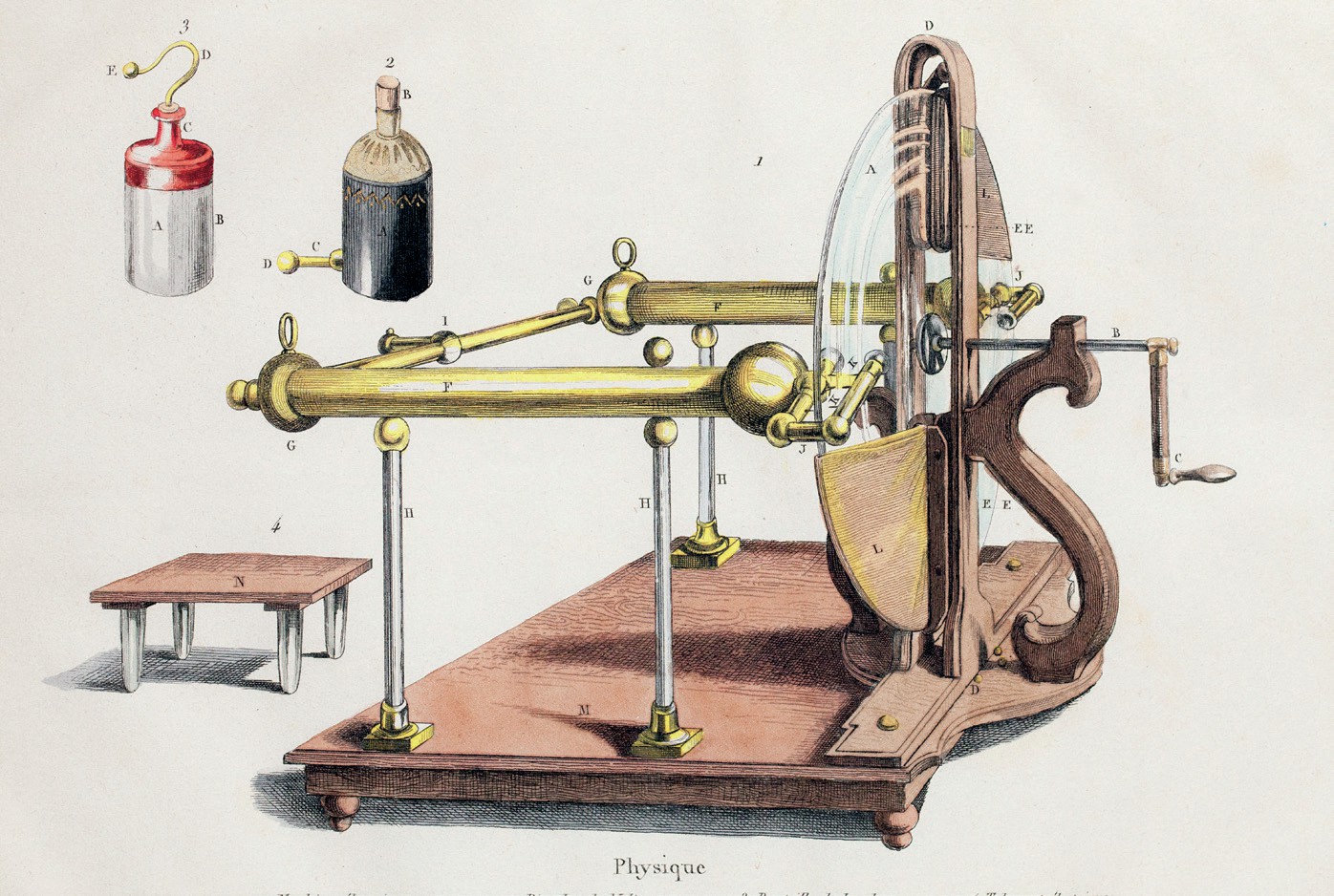
Static electricity was a popular subject for research in the eighteenth century. In the machine shown in Figure 1, a rotating glass plate rubs against a piece of leather to produce a separation of charge and hence a potential difference (voltage) between the leather and glass. To the left of Figure 1 is a Leyden jar, used to store the ‘electricity’ produced by the machine, and a corked bottle, known as Volta’s pistol, which contained explosive gases that could be ignited by a spark from the machine to eject the cork and produce a bang.
The Leyden jar (Figure 2) was invented in 1746 and is the forerunner of modern capacitors. A glass jar is lined with metal foil, which is connected to a metal rod, and wrapped in another foil layer, which is earthed. The potential difference between the foils can reach several hundred volts, and a charged Leyden jar can deliver a serious electric shock.
Your organisation does not have access to this article.
Sign up today to give your students the edge they need to achieve their best grades with subject expertise
Subscribe
